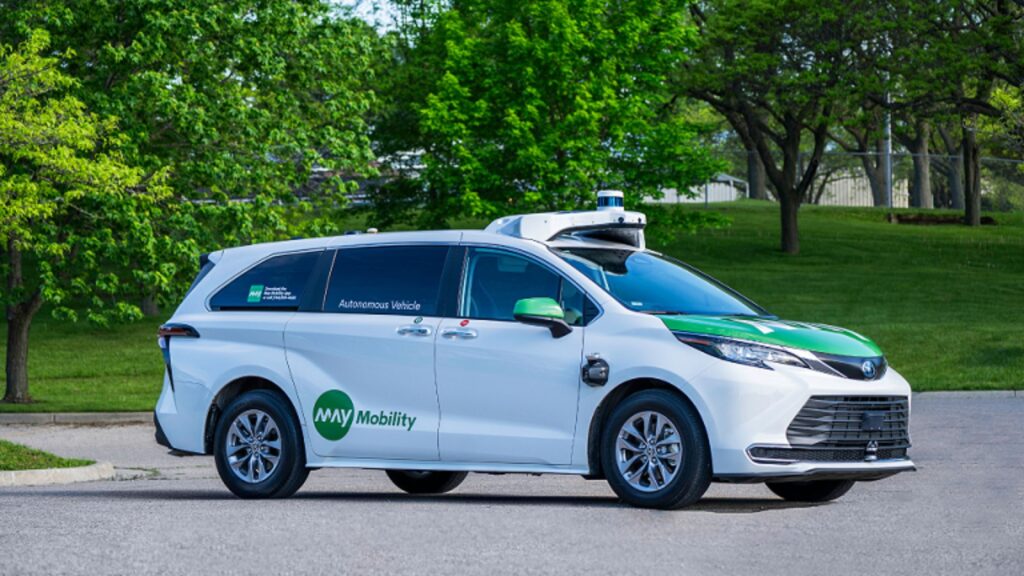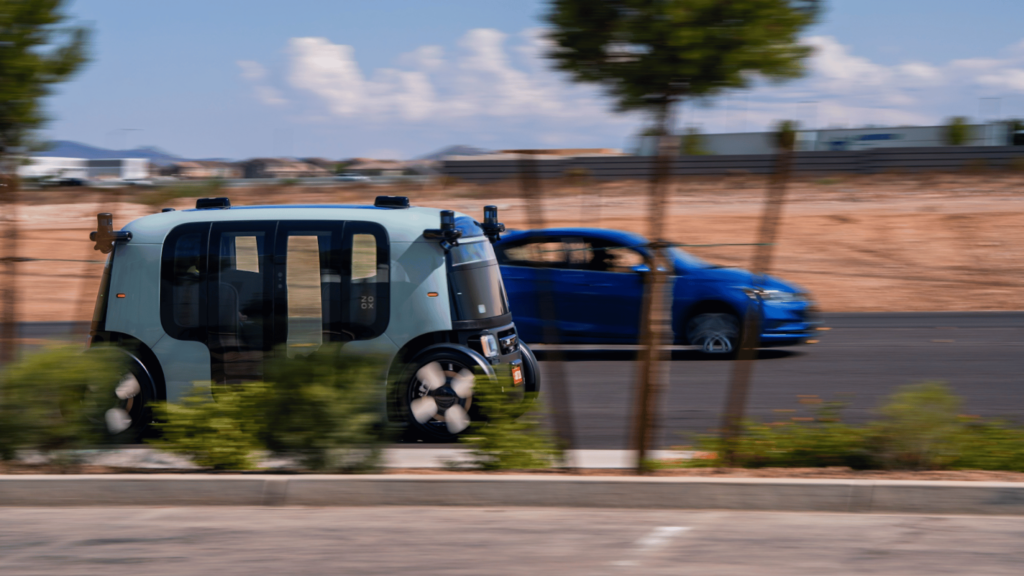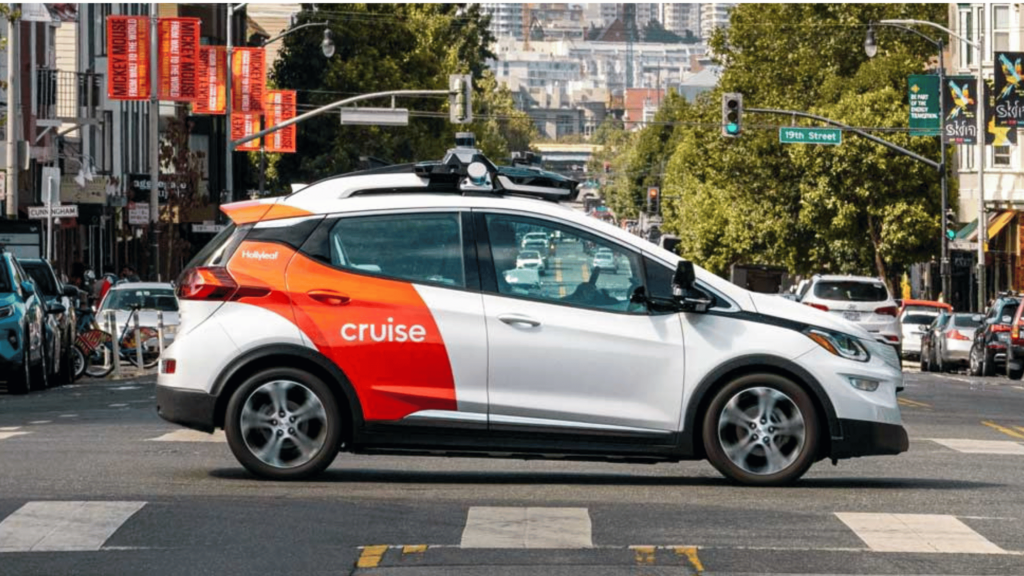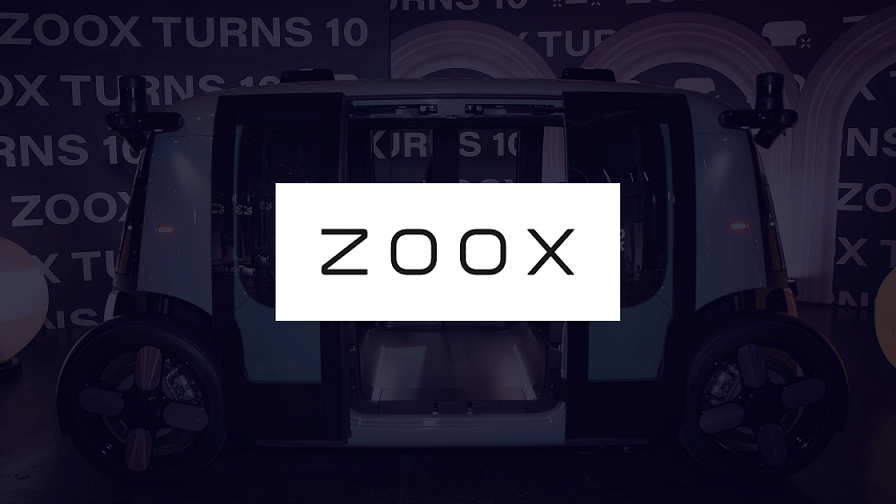The autonomous vehicle (AV) industry is rapidly transforming transportation, and May Mobility stands out as a pioneering force in this revolution. Founded in 2017 and headquartered in Ann Arbor, Michigan, May Mobility has carved a niche by focusing on practical, scalable, and community-oriented autonomous solutions.
Its co-founders—Edwin Olson, Alisyn Malek, and Steve Vozar—brought together decades of experience in robotics, automotive engineering, and autonomous systems.
Edwin Olson, now CEO, has a Ph.D. in electrical engineering and computer science from MIT. Olson had co-led the MIT team in the 2007 DARPA Urban Challenge, honing his skills in autonomous navigation. After MIT, he became a professor at the University of Michigan, directing the APRIL Robotics Lab, and later worked on AV projects at Ford and the Toyota Research Institute.
Unlike competitors chasing high-profile robotaxi fleets in dense urban cores, May Mobility targets mid-sized cities, suburbs, and specific use cases like retirement communities and corporate campuses.
As of March 26, 2025, the company has made significant strides, blending innovative technology with strategic partnerships to redefine mobility.
Key Facts About May Mobility
Here are 10 key facts about May Mobility, highlighting its role in the AV landscape.
1. Pioneering Multi-Policy Decision Making (MPDM) Technology
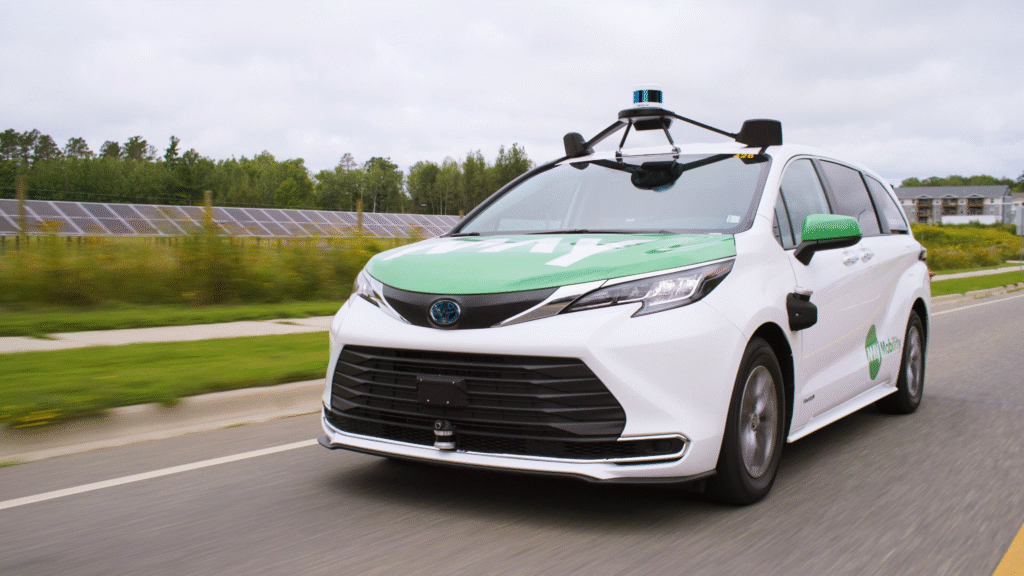
At the heart of May Mobility’s success is its patented Multi-Policy Decision Making (MPDM) system, a real-time, reinforcement-learning AI that sets it apart from traditional AV approaches. Unlike systems reliant on pre-collected training data, MPDM runs thousands of simulations every 200 milliseconds, adapting to new driving scenarios on the fly. This in-situ learning capability allows May Mobility’s vehicles to handle unexpected situations—like erratic pedestrians or construction zones—more safely and efficiently, a critical advantage over competitors using static datasets.
2. Over 400,000 Autonomy-Enabled Rides
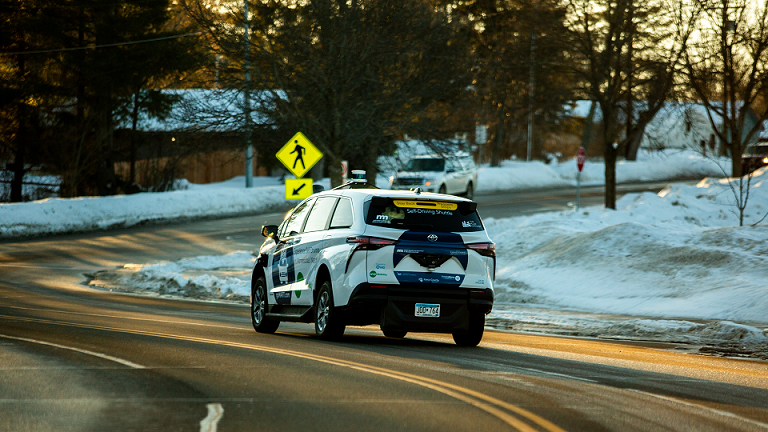
By early 2025, May Mobility has completed over 400,000 autonomy-enabled rides across 18 deployments in the U.S. and Japan. This milestone, built on a foundation of more than 335,000 rides by late 2024, reflects the company’s operational scale and reliability. From rural Grand Rapids, Minnesota, to urban Detroit, Michigan, these rides demonstrate May Mobility’s ability to serve diverse environments, earning it a reputation as a trusted transit provider.
3. Strategic Partnership with Toyota

May Mobility’s deep ties with Toyota Motor Corporation have been instrumental in its growth. The company deploys autonomous Toyota Sienna minivans, known as Autono-MaaS (Mobility-as-a-Service) vehicles, equipped with its AV technology. Toyota’s financial backing, including investments from Toyota Financial Services, and technical collaboration ensure a robust platform, blending automotive expertise with cutting-edge autonomy. This partnership has enabled deployments like the driverless service in Ann Arbor, launched in November 2024.
4. First Driverless Commercial Service in Peachtree Corners
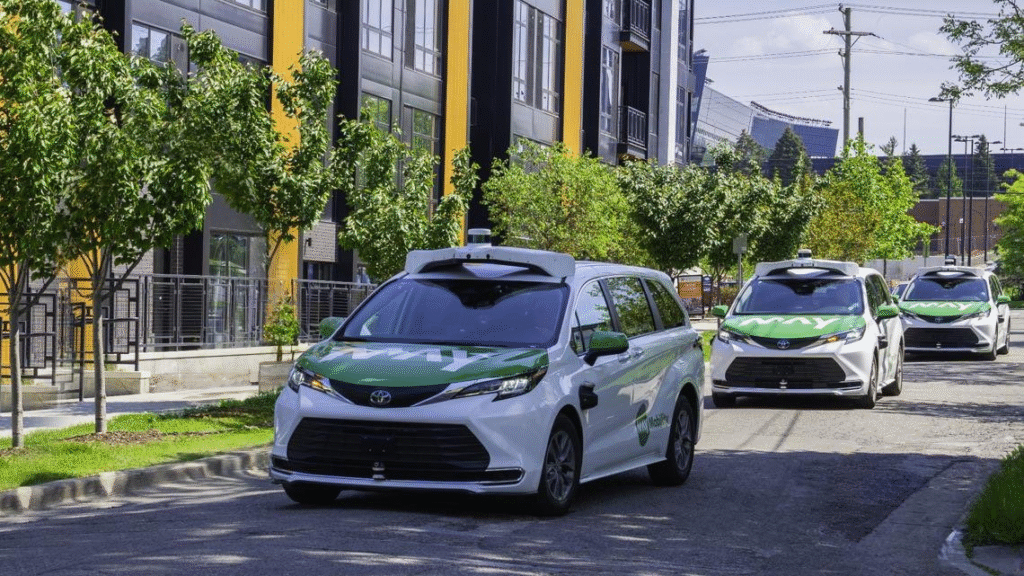
On February 12, 2025, May Mobility launched its first fully driverless commercial ride-hail service in Peachtree Corners, Georgia, a tech-centric suburb of Atlanta. Operating along a 4-mile stretch of Technology Parkway, this deployment removed human safety operators, relying instead on a robust Tele-Assist platform for remote monitoring. Partnered with Curiosity Lab, a city-owned AV testing ground, this service marks a leap toward scalable driverless operations, generating revenue and proving the viability of its “gentle on-ramp” commercialization strategy.
5. Lyft Partnership for Atlanta Expansion
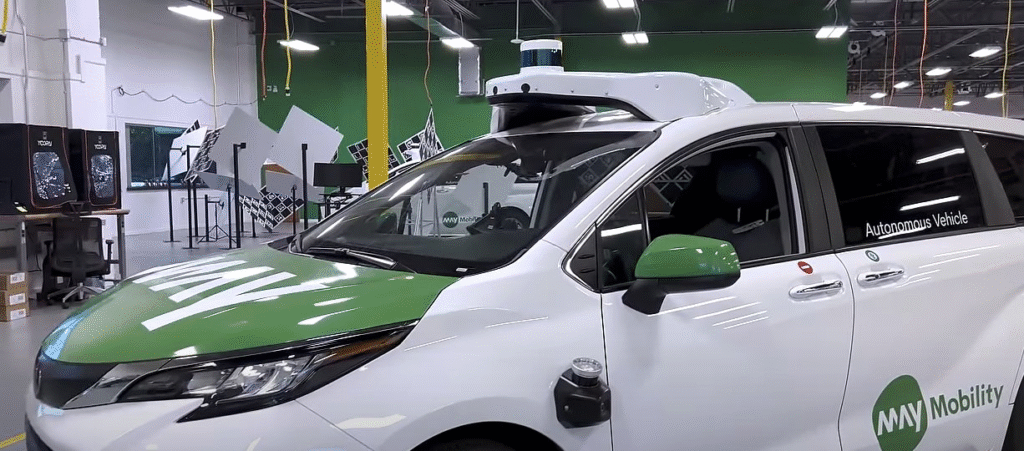
Announced on February 12, 2025, May Mobility’s multi-year partnership with Lyft aims to integrate its autonomous Toyota Siennas into the Lyft app, targeting a public rollout in Atlanta by summer 2025. This collaboration leverages Lyft’s vast ride-hailing network and May Mobility’s geofenced technology—featuring five LiDARs, nine cameras, and five radars—to offer accessible, driverless rides. May Mobility plans to use multiple Ouster LiDAR sensors per vehicle, underscoring the partnership’s technical ambition.
6. Focus on Accessibility and Inclusion
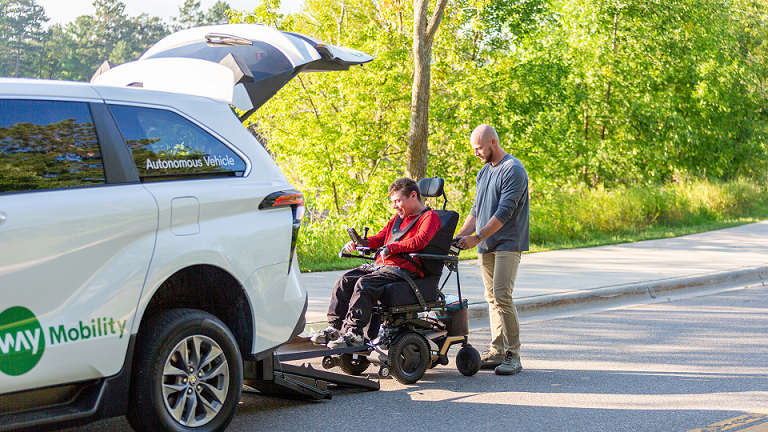
May Mobility prioritizes accessibility, embedding features like wheelchair ramps, automated audio announcements, and braille keypads into its vehicles. This commitment shines in deployments like Sun City, Arizona (December 2023), where driverless shuttles serve retirees, and Grand Rapids, Minnesota, where a 2024 survey showed 98% of riders felt safe and comfortable. By addressing mobility gaps for the elderly and disabled, May Mobility aligns with its mission to make transportation equitable and sustainable.
7. Expansion into High-Capacity Vehicles

At CES 2025 (January 7-10), May Mobility unveiled a partnership with Tecnobus, an Italian electric minibus manufacturer, to develop an autonomous minibus seating up to 30 passengers. This fully electric, wheelchair-accessible platform, expected to be road-ready by mid-2026, targets urban transit, airports, and corporate campuses. With swappable batteries for minimal downtime, this move broadens May Mobility’s portfolio beyond the Toyota Sienna, challenging Waymo’s dominance in larger-scale autonomous transit.
8. Safety-First Approach with Tele-Assist

Without safety operators in its driverless deployments, May Mobility relies on its Tele-Assist platform, where remote operators monitor vehicles and intervene if needed—approving maneuvers rather than driving directly. This system, paired with MPDM’s real-time adaptability, has maintained a flawless safety record across hundreds of thousands of miles. The company’s participation in rigorous safety audits, like its 2024 collaboration with Edge Case Research, further solidifies its credibility.
9. Rural and Suburban Market Niche
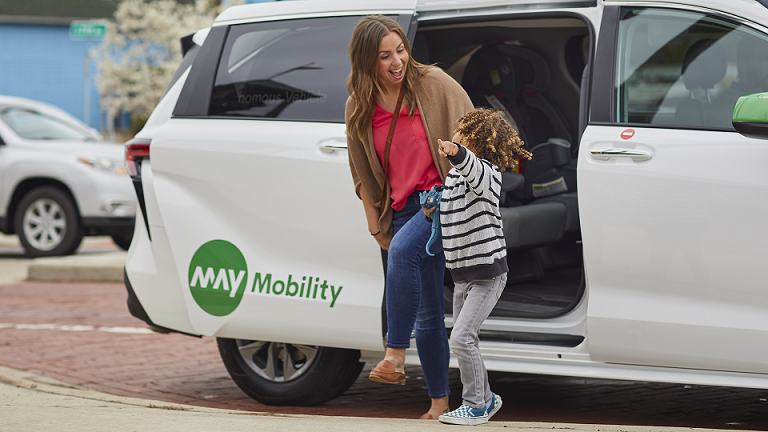
Unlike Waymo’s urban focus or Tesla’s nationwide FSD ambitions, May Mobility targets underserved rural and suburban areas. Its deployments in Grand Rapids (10,000 riders by July 2024) and Sun City highlight this strategy, addressing transit gaps where traditional buses are costly or impractical. CEO Edwin Olson has emphasized this niche, noting in a March 2023 Forbes interview that smaller, autonomous vehicles can “drive circles around” fixed-route buses, reducing wait times and costs.
10. Path to Profitability

May Mobility aims to be the first profitable AV company, a goal Olson reiterated in a January 2024 Emerging Tech Brew interview. With over $300 million in venture funding and a lean autonomy team of about 50 engineers, the company comparatively burns minimal cash. Its asset-light model—partnering with transit agencies and businesses like Lyft—avoids the high costs of building consumer-facing fleets, positioning it for financial sustainability as it scales.
Conclusion
May Mobility stands out as a compelling innovator in the autonomous vehicle landscape,prioritizing practical, community-centric solutions over the urban robotaxi race.
With a mission to enhance accessibility and sustainability, the company has deployed its autonomous Toyota Sienna minivans across 18 U.S. and Japanese cities, completing over 400,000 autonomy-enabled rides by March 2025—a leap from 335,000 in late 2024. This growth reflects a global AV market projected to soar from $54.23 billion in 2024 to $2,752.8 billion by 2033, with a CAGR of 39.47% (Allied Market Research).
In conclusion, May Mobility exemplifies a deliberate, impactful approach to autonomy. It’s not the loudest voice in the room, but its achievements speak volumes.
You May Also Like:
U.S. Autonomous Vehicle Roundup (January to March 2025)
Autonomous Delivery: 10 Key Facts About Nuro
10 Fascinating Things to Know About the Tesla Cybercab (Tesla Robotaxi)

I’m Dr. Brandial Bright, also known as the AVangelist. As a dedicated and passionate researcher in autonomous and electric vehicles (AVs and EVs), my mission is to educate and raise awareness within the automotive industry. As the Founder and Managing Partner of Fifth Level Consulting, I promote the adoption and innovation of advanced vehicle technologies through speaking engagements, consulting, and research as we progress to level 5 fully autonomous vehicles.

